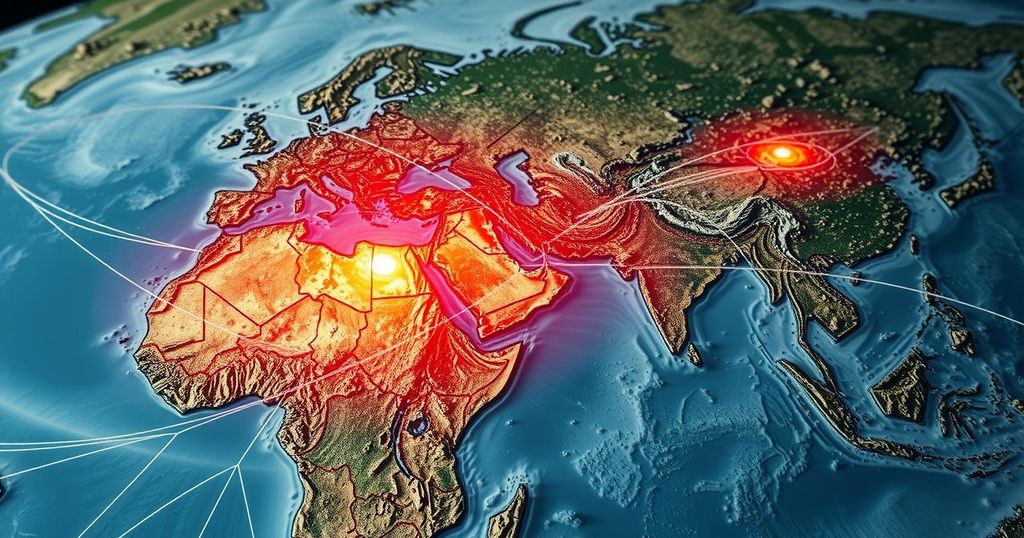A 6.1-magnitude earthquake occurred in Chile on January 2, centered in Calama. Preceding this, a series of earthquakes affected California and Alaska, including a 4.7-magnitude earthquake in Cobb, California. The activity illustrates ongoing seismic risks across various global regions, prompting the need for vigilance and preparedness.
On January 2, a 6.1-magnitude earthquake struck in Chile with its epicenter located in Calama, at a depth of 99 kilometers (approximately 61.5 miles). According to the United States Geological Survey (USGS), there were 25 reports from individuals who felt the tremors at the time of reporting. This incident occurred shortly after a 4.7-magnitude quake was registered in California on January 1, originating from Cobb at a shallower depth of 1.1 kilometers (around 0.7 miles).
This recent seismic activity in Chile is part of a series of earthquakes hitting various locations within a short span. On December 30, Alaska experienced a 3.3-magnitude earthquake in Nikolski, which was notable for its depth of 39.5 kilometers (approximately 25 miles). Prior to this, another 3.3-magnitude event occurred in California, particularly in Fort Bidwell, at a depth of 3.4 kilometers (about 2.1 miles).
Notably, a stronger 6.7-magnitude earthquake was reported on December 27 in the Kuril Islands, centered at significant depth of 162.6 kilometers (approximately 101 miles). This event followed a 3.6-magnitude earthquake in McCarthy, Alaska, on December 26, recorded at a depth of 8.1 kilometers (around five miles). Furthermore, preceding these incidents, a 3.0-magnitude earthquake was noted in California on December 25 at a depth of 13.2 kilometers (approximately 8.2 miles).
Overall, the sequences of earthquakes within this time frame highlight the persistent seismic activity across different regions, drawing attention to the geographical vulnerabilities prevalent in areas prone to earthquakes. These incidents are a reminder of the dynamic nature of Earth’s lithosphere.
The phenomenon of earthquakes is a significant geological event caused by the sudden release of energy in the Earth’s crust, leading to seismic waves. These occurrences can be measured by magnitude, indicating their strength and impact. The United States Geological Survey (USGS) plays an essential role in tracking seismic activity, offering real-time data on earthquakes worldwide. Earthquakes can trigger various geological processes and pose risks to population centers, emphasizing the need for preparedness and prompt responses in affected regions.
In conclusion, the recent 6.1-magnitude earthquake in Chile, alongside a series of seismic events across the globe, underscores the continuous geological activity that affects multiple regions. With the USGS monitoring these occurrences, it is crucial for communities to remain informed about seismic risks and to enhance their preparedness strategies against potential earthquakes. Such heightened awareness is vital for mitigating risks associated with future seismic events, thereby protecting lives and infrastructure.
Original Source: www.wercfm.com






